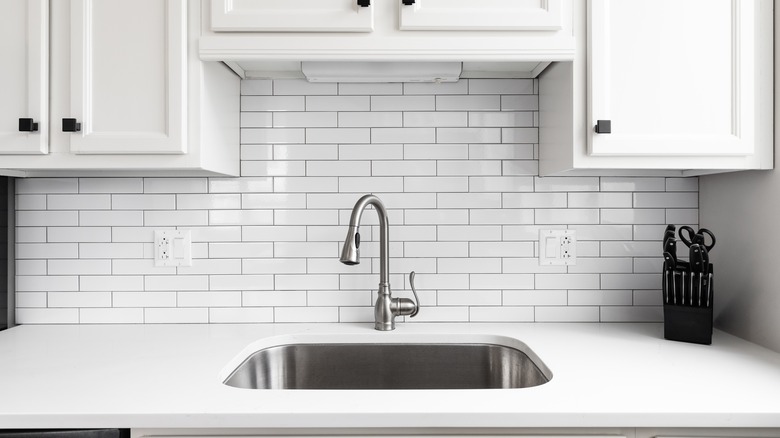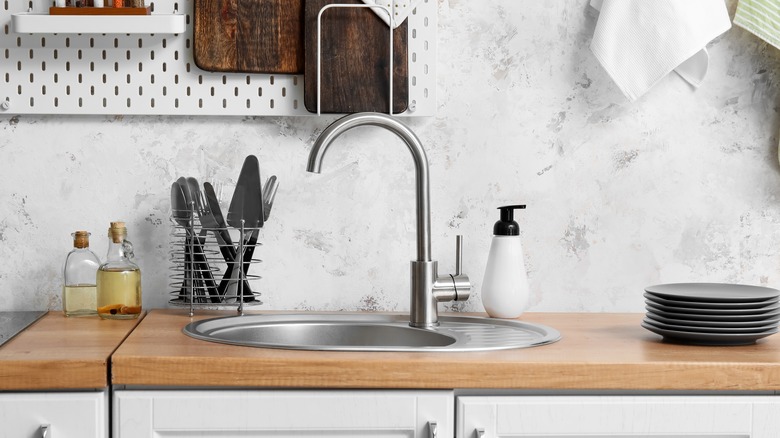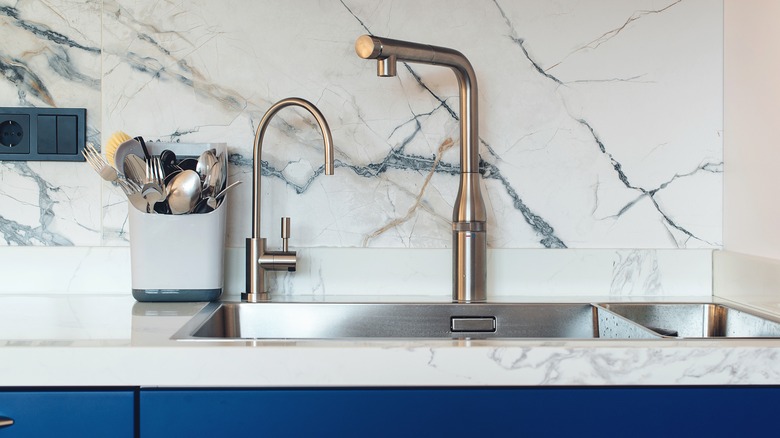Should You Clean Your Stainless Steel Sink With Bleach?
Bleach is a strong disinfectant that can kill bacteria and even mold. Since it is such a good disinfectant it makes sense to use bleach to disinfect your kitchen sink. However, bleach is so strong that it needs to be diluted before it should be used on anything. Kitchn recommends diluting bleach with water in a ratio of one to fifty. It is also important to know that while bleach is an excellent disinfectant, it is not a cleaner. This means that any surface needs to be cleansed with soap before it can be disinfected with a diluted bleach solution.
Bleach can also be dangerous. It should never be mixed with vinegar or ammonia or it will create a toxic gas. Using bleach on your sink can be a bad idea depending on the material your sink is made of. While you do want to disinfect your stainless steel sink, you should never use bleach.
Never use bleach on stainless steel
Bleach and stainless steel don't mix. If you were to use chlorine bleach to clean stainless steel appliances or a stainless steel sink you would be putting the surfaces at risk of corrosion. Bleach is a strong chemical that can destroy the protective layer on stainless steel even when it's heavily diluted.
When chlorine bleach comes into contact with stainless steel a complex electrochemical process occurs, which, according to Hunker, causes pitting. As well as the shine being removed from the surface, pitting creates small holes in the stainless steel. What happens exactly is that the chlorine in bleach eats away at the protective layer of chromium oxide, which is what makes stainless steel stainless and shiny. What makes stainless steel so worthwhile is that it is stainless and has a well-known shiny chrome look. Using bleach on stainless steel would take away its most durable characteristics. Fortunately, there are other ways to disinfect a stainless steel sink without ruining it.
How to clean stainless steel
A natural and safe way to disinfect stainless steel sinks involves using white distilled vinegar and hydrogen peroxide. White distilled vinegar and hydrogen peroxide are both effective as a disinfectant. They kill bacteria, including germs and mold, according to Get Green Be Well. However, be careful not to combine the two or a dangerous gas can be created.
Similar to disinfecting with bleach, the stainless steel sink needs to be clean before it can be disinfected. To clean the sink first make sure it is empty of any dishes. Use a sponge or brush with mild soap, like dish soap, and some water to clean the sink. Wipe it dry when you are done. Then spray the sink down with white distilled vinegar in a spray bottle and allow it to dry completely. To do this next step it's important to make sure that the vinegar is dry. If it is, you can spray the sink down with hydrogen peroxide and allow it to air dry.


